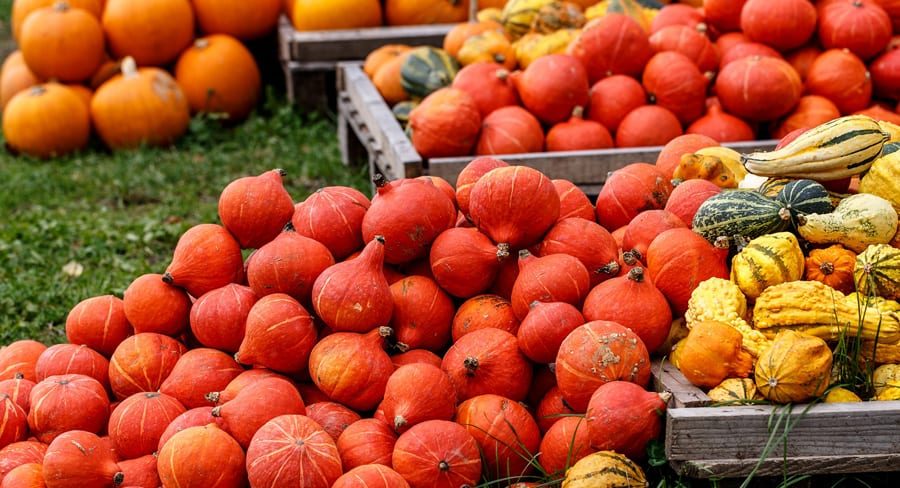
Home » A pumpkin primer in time for the holidays
A pumpkin primer in time for the holidays

November 14, 2018
By Marilou Shea
It came as no surprise to my mom when I told her that Lurene Fleshman of Harris Produce in Pasco told me that they don’t use pumpkins in their pie-making. They use squash. In New England, where we’re from, squash pie was the original pumpkin pie. It was in that same region that the Pilgrims celebrated their second - not first Thanksgiving - featuring pumpkin pie in 1623.
 Marilou Shea,
Marilou Shea,
Today, moms and bakers know that one of the best ways to make a flavorful pumpkin pie is to eschew the pumpkin part. It’s hard to believe that those uniquely contorted shapes of the vegetable we know as squash is the harbinger of great taste, texture and tint. However, a pumpkin is actually a cultivar of a squash plant, most commonly Cucurbita pepo, and the two share the same DNA.
The canned pumpkin filling you load up on at the grocery store isn’t the kind of pumpkin that first comes to mind. Libby’s canned product is a kind of squash called a Dickinson that also has orange flesh.
Why the confusion? The primary reason is that squash is notably less watery than pumpkin, although texture and taste rank up there too. Food Network’s “The Kitchen” show had a recent segment featuring how to make spaghetti squash pizza crust. The hosts claimed it was better tasting than the trend-setting cauliflower version.
The Cooking Channel did a segment called, “Best Pumpkin Pie: Squash Taste Test,” comparing squash and pumpkins on the pumpkin pie-baking front. The unanimous winner based on texture, flavor and color was Red Kuri squash. It won for its thick, creamy consistency, lovely hue and uniquely sweet, rich flavor. Kobacha squash was the runner-up. Tasters claimed it possesses a rich, creamy texture and deep pumpkin flavor that isn’t overpowered by the favorite fall spices.
If you’re feeling adventurous this holiday, these squash varieties may suit your fancy for pumpkin pie testing, over its plump cousin, the pumpkin:
Acorn squash—green and shaped like a ginormous acorn.
Butternut squash—shaped like a peanut shell with a taupe skin—think Mr. Planter’s minus the top hat.
Kabocha squash—not to be confused with the trendy Kombucha tea. Its rough-hewn skin has a deep green color.
Red Kuri squash—a deep, brilliant orange hue with an elliptical shape.
Sugar pumpkin—almost perfectly shaped, bright petite pumpkins that are the default option at retail for those who wish to make a pumpkin pie from scratch.
Long Island Cheese pumpkin—This flat, lightly-ribbed pumpkin looks like wheels of cheese with buff-colored skin.
The economics of pumpkins is interesting, too. According to the U.S. Department of Agriculture, pumpkin supplies from most states are targeted toward the seasonal fresh market for ornamental uses and home processing - think Martha Stewart.
Growers mainly produce jack-o'-lantern type pumpkins (Howden), but demand for specialty pumpkins—like White Howden (aka Ghost), Blue, Cinderella, and Fairytale— continues to expand as consumers look for new and interesting varieties.
The majority of domestic pumpkins are grown among six states, with Illinois leading by a large margin of seven times the other states. Although Illinois yields the most product in sheer acreage, output and yield, most of its crop is destined for the processing market. That’s the stuff supposedly squished into the cans you buy at the grocery store, think Rachael Ray, versus the fresh market. Just like asparagus, the processed market means a lower price per pound compared to the fresh market. So while Illinois produces the most, it is not necessarily rolling in the dough, or revenue.
In 2017, farmers in the top 16 pumpkin-producing states harvested 1.5 billion pounds of pumpkins. While Washington state is not among that top tier, we still get our fix with the bounty from local growers whether they’re destined for the oven or front porch.
Whether you’re a cultivated pumpkin pie lover or squash aficionado, both are a traditional part of the holidays. Enjoy yours in whatever version you prefer, served with a dollop of trivia on top. What’s not to love?
Food Love columnist Marilou Shea is adjunct faculty for Columbia Basin College’s hospitality program and Food Truck Academy, as well as the creator of Food Truck Fridays.
Local News
KEYWORDS november 2018





